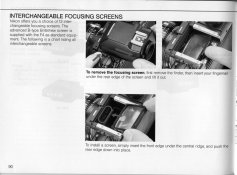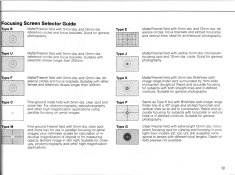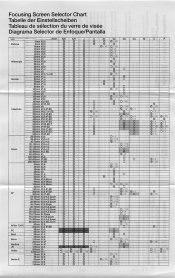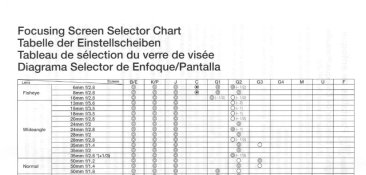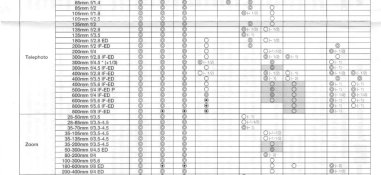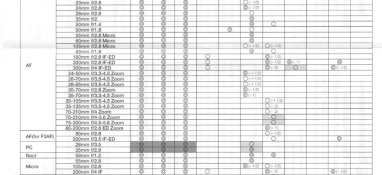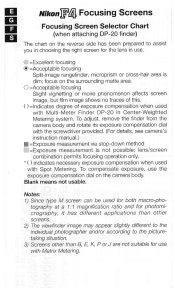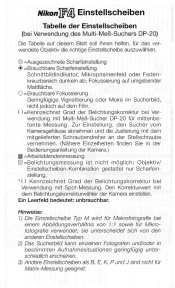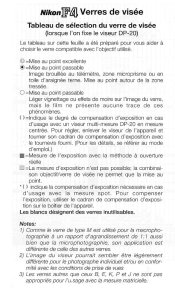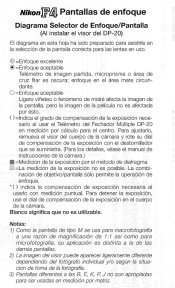Focus screens that are intended for use with autofocus lenses typically increase viewfinder brightness, but as a result do not necessarily show the image that reaches the film when the aperture diaphragm opening is wide.
For example, the screen may effectively vignette the peripheral light so that the maximum aperture as shown in the viewfinder image may be f/2 or f/2.8, even if the lens is actually faster and wider open than that. In such cases, the viewfinder seen image shows the reduced brightness and increased depth of field of the lens when stopped down somewhat, even though the lens is actually wide open, so the film records the brightness and depth of field of the wide open lens and not what is depicted in the viewfinder. That is the reason for focus difficulty when the lens is wide open with such bright screens.
For cameras that focus with the lens wide open (as is usual with modern cameras), it can be quite confusing that the lens created image while manually focusing often matches neither what is shown in the viewfinder with the bright screen, nor the image as it will be with the diaphragm stopped down for exposure in brightness, depth of field, or focus.
It gets even more confusing if the lens also exhibits focus shift, as the diaphragm is stopped down due to progressive decrease in spherical aberration with reduced aperture.
An easy way to check for focus screen vignetting is to see if the viewfinder image continues to get brighter as the (preview stopped down) lens aperture is opened. If, for example, the viewfinder image gets brighter as the lens aperture is opened from f/5.6 to f/2, but does not get any brighter from f/2 to f/1.4, then you can conclude that the focus screen is not appropriate for attempting to focus at f/1.4 because it is hiding the light from the periphery of the lens.










